Modified : 21 Jun 2022
Scrape Emails With Puppeteer
Email marketing is still #1 lead getter. There are companies that will sell the business info along with their emails, phone numbers etc. But if you are a developer like me, you would want to cut these costs and build your own list of contacts. In this tutorial, we will go over the steps of scraping emails from the websites that are available publicly.
Prerequisites
-
MongoDB
MongoDB is an excellent database to work with and they even have a free version. Check it out MongoDB
-
Node JS
Node JS is a superfast non-blocking IO javascript runtime environment built on Chrome's V8 engine. A perfect tool for projects that are not too computational.
-
Puppeteer
Puppeteer is a predominantly headless browser which means it can work in the background and expose features for us (developers) to interact with. Can be used for testing, scraping and auditing websites. With the advent of SPA's (single page applications) where the content is loaded dynamically, traditional scraping will not work on those sites. So we need a real browser to scrape the data. Puppeteer launches chromium browser in the background.
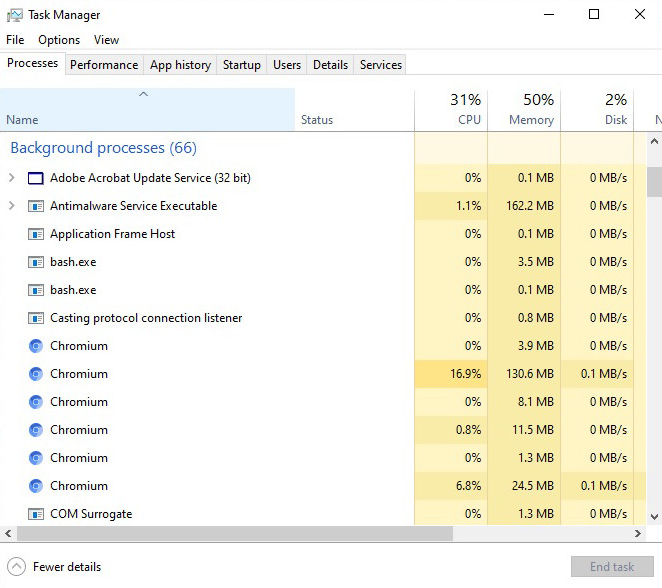
Flow of the App
Let's discuss the steps involved in building this email scraper. The whole point of getting emails is to have some sort of campaign going on. We will choose mongDB to hold the data. In my opinion mySQL is a better choice if you want to develop more features like email tracking, event hooks, subscribe, unsubscribe etc. Without further due, let's get into it.
- Choose a search term
- Scrape the results using puppeteer
- Extract the link and the tile
- Save the values into the database
- Redo all the above for page 2 OR Redo all the above with a different keyword (Optional)
- Fetch urls from the database one by one and run email scraper
- Clean the emails from unnecessary noise
- Save the emails back to the database
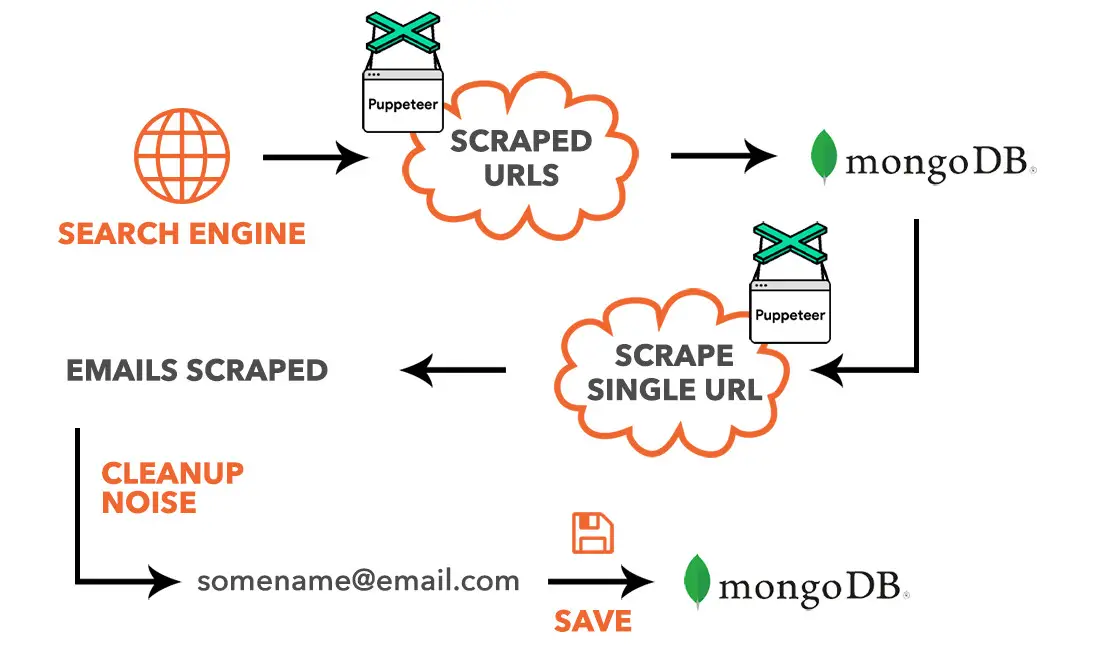
Setup
MongoDB
Since we will be running the scraper in loops, it's important to reuse the mongodb connection to prevent memory leaks.
npm i --save mongodb// mongoPool.js
const mongo = require('mongodb').MongoClient;
let mUrl = '<REPLACE WITH YOUR MONGODB URL>'
var connection = null
function getConnection(cb) {
if (connection != null) {
// console.log("Connection reused")
cb(connection)
} else {
mongo.connect(mUrl, {
useNewUrlParser: true,
useUnifiedTopology: true
}, function(err, db) {
if (err == null) {
// console.log("Connection Created")
connection = db
cb(connection)
} else {
// console.log("Connection Failed " , err)
connection = null
cb(connection)
}
})
}
}
module.exports.getConnection = getConnectionPuppeteer
Similarly, we would want to reuse the browser object without closing. Instead, we will open and close the pages programmatically. Puppeteer has all that we need to scrape without requiring any other packages like "cheerio", "request" etc.
npm i --save puppeteer// google.js
const puppeteer = require('puppeteer');
var browser = null;
async function initializeLaunch(){
if(browser === null){
browser = await puppeteer.launch();
}
}
async function search(query){
try{
await initializeLaunch()
const page = await browser.newPage();
await page.goto('https://www.google.com/');
await page.waitForSelector('input[aria-label="Search"]', {visible: true});
// Inject code here to Scrape results
await page.close()
}catch(err){
await browser.close()
browser = null
}
}
async function closeBrowser(){
await browser.close()
}
module.exports.search = search
module.exports.closeBrowser = closeBrowser
Process
Scrape list of urls
I chose the keyword "Digital Marketing in CT" and ran it through the scraper.
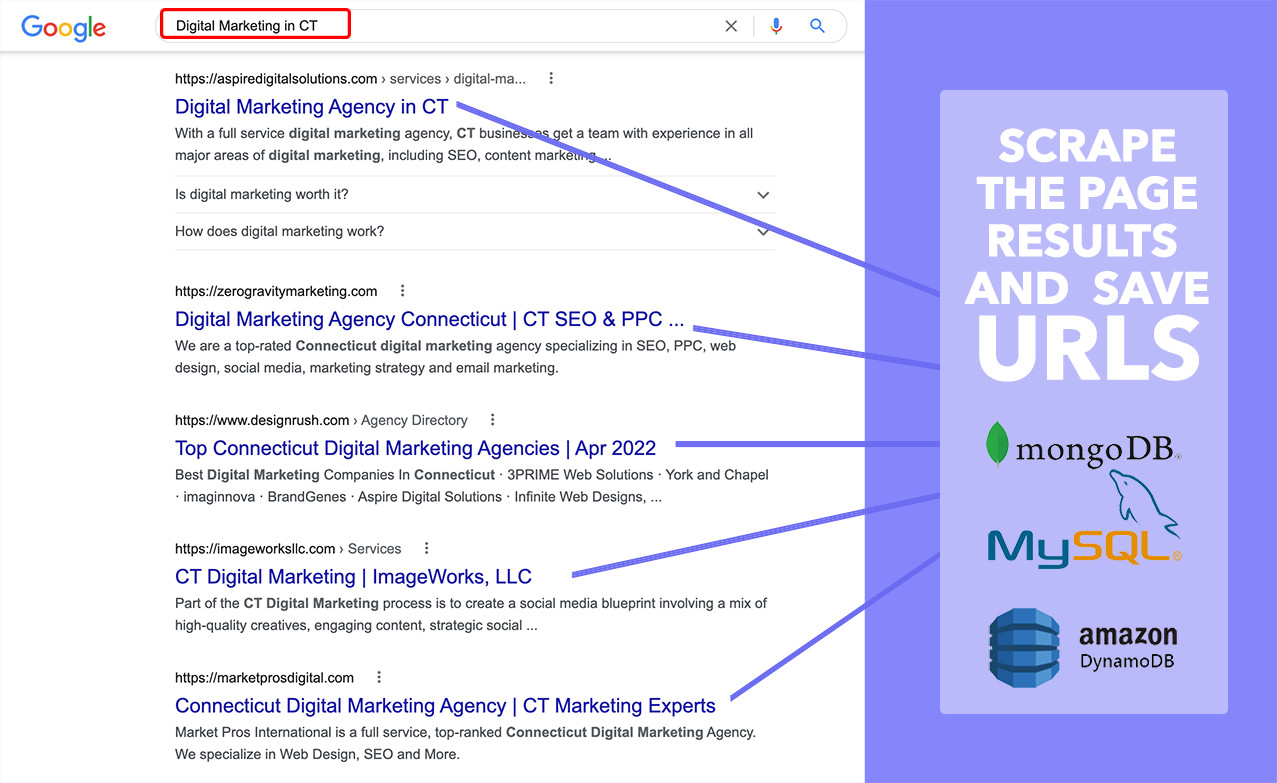
-
Wait for the search box using the command
await page.waitForSelector('input[aria-label="Search"]', {visible: true}); -
Wait for all the results
await page.waitForSelector(".LC20lb", {visible: true}); -
Scrape the links and their titles and also filter the results if they are of social media accounts'. We want to scrape only the website addresses. So removing a known list of online directories and social media accounts improves the chance of getting the company email. See the array of "sites" in the code below.
await page.evaluate(() =>{ var sites = ['linkedin','merchantcircle','angi','facebook','houzz','pinterest','instagram','twitter','bark','yelp','upcity','signalhire','clover','youtube','zoominfo','pixabay','dandb','dnb','manta','buzzfile','mapquest','smallbusinessdb','bbb','porch','whereisalocal','yellowpages','yellow.place','allpeople','verview','wikipedia','showmelocal','chamberofcommerce','finduslocal'] var nodes = document.querySelectorAll(".LC20lb") var serp = [] mongoPool((pool) => { if (pool !== null) { // you can also use "if(pool)" but i went for a cleaner syntax const dbo = pool.db('myDB').collection("profiles") for(var n of nodes){ var link = n.parentNode.href var title = n.innerText var allow = true for(var s of sites){ if(link.includes(s)) {allow=false;break;} } if(allow) dbo.insertOne({title,link}, function(err, res) {}); } } }) }); -
Close the page
await page.close() -
Surround the above code in a try catch block, close the browser and nullify its value.
await browser.close(); browser = null - By this step, we would have populated our database with results of digital marketing companies. Repeat this step with different keywords of your choice (Optional)
Scrape emails from urls
-
Open the page in puppeteer and wait till it loads completely. Then get the source code using
await page.content(). Apply javascript regex on the content to filter the emails into an array. These emails need to be unique and not of any false positives.function extractEmails(text) { return text.match(/([a-zA-Z0-9._-]+@[a-zA-Z0-9._-]+\.[a-zA-Z0-9_-]+)/gi); } function onlyUnique(value, index, self) { return self.indexOf(value) === index; } await page.goto(url, { waitUntil: 'networkidle0' }); // await page.waitForNavigation(); var pageContent = await page.content() var email = extractEmails(pageContent) if(email !== null) { email = email.filter(y=>(!y.includes('@2x.png') && !y.includes('@3x.png'))) email = email.filter(onlyUnique) } await page.close()
-
Save filtered emails back to the database
var oid = require('mongodb').ObjectID db.updateOne({_id : oid(id)}, {$set: {'d.url' : url}}, function(err, result) { // Rerun for another url (Pagination) });
Puppeteer consuming too much disk space?
When you run puppeteer continuously, it tends to save chrome profiles in the default temp /tmp/ folder (Ubuntu linux). A lot of profiles are saved under snap.chromium/tmp folder and it requires constant cleanup if you wish not to run out of disk space.
Use this code to delete only those profiles that are not needed.
try{
var fs = require('fs')
var act = '/tmp/snap.chromium/tmp'
var keep = fs.readdirSync('/tmp/')
var remo = fs.readdirSync(act)
remo.map(file => {
if(file.includes('puppeteer_dev_chrome_profile')){
if(keep.indexOf(file) === -1) {
fs.rmdirSync(`${act}/${file}`,{recursive:true})
console.log("Removed", file)
}else{
console.log("Kept", file)
}
}
})
}catch(err){
console.log("Some error", err)
}Conclusion
This scraper can have extended functionality such as scraping the complete website to increase the chance of getting emails. For example use this with the npm package website-scraper. Or even build a standalone app using Electron JS.
Post a comment
Comments
Recent Posts

Webcam to CCTV
Do you want to access your webcamera remotely? Then this article is for you.
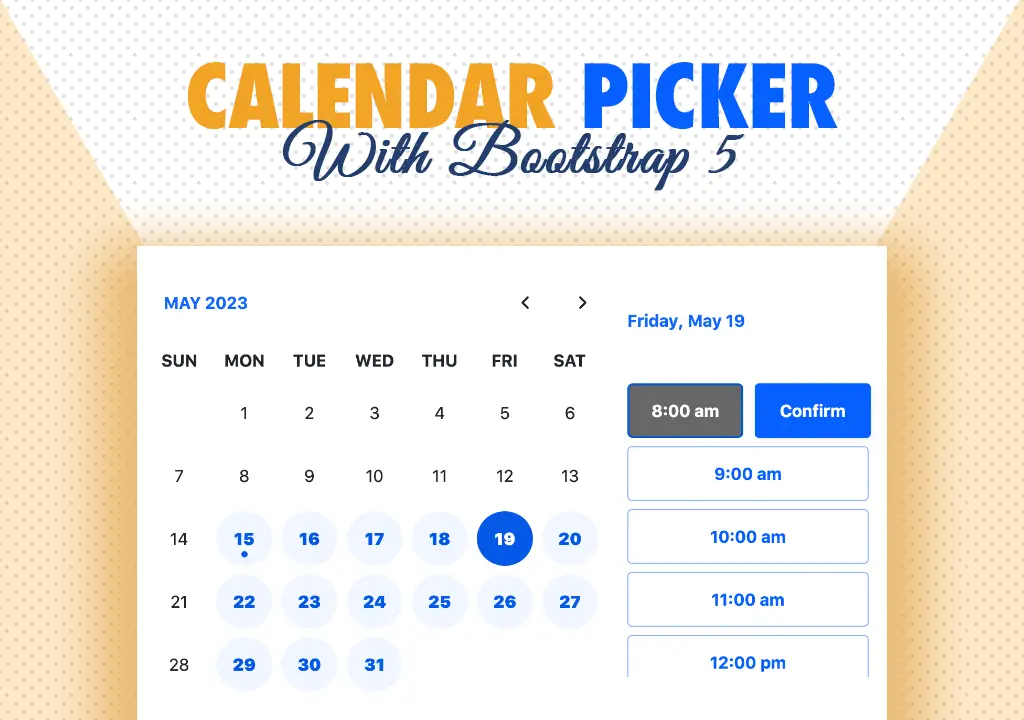
Calendar Picker
Calendar Picker / Appointment Setter JS CSS Library. Inspired by Calendly.
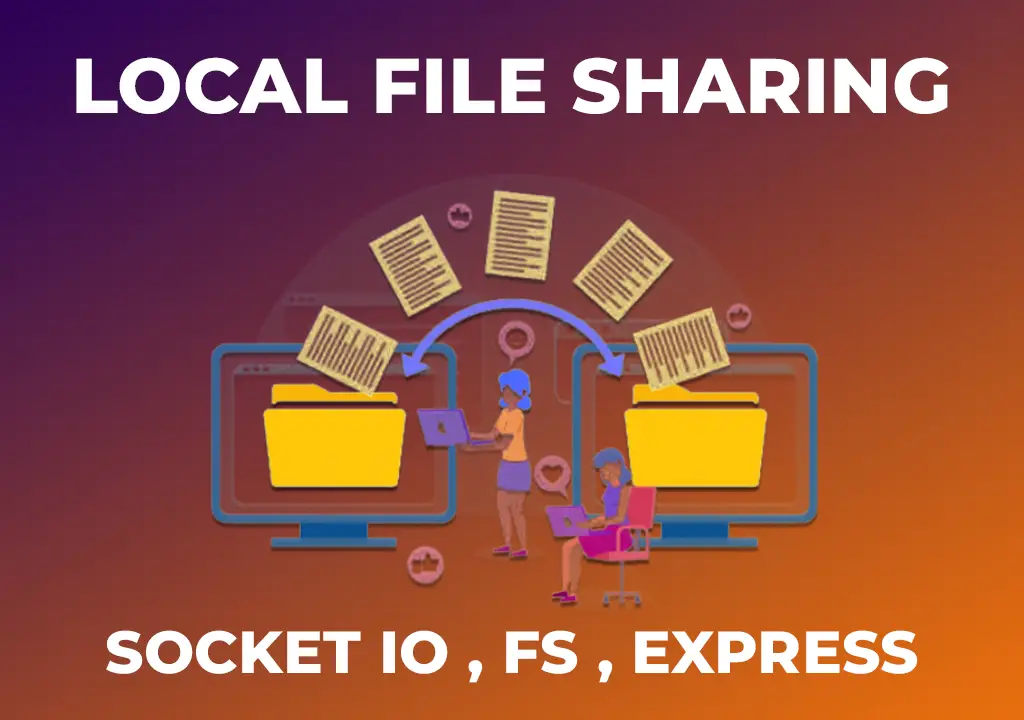
File Sharing Server
Create a local file sharing server with realtime sync feature using Socket IO.

Tailwind Navbars
Most beautiful Navbars designed with tailwind css. Fully responsive templates.
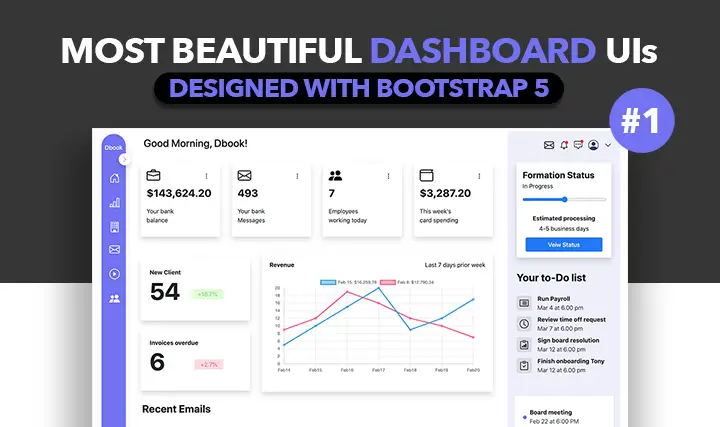
Dashboard UIs
Most beautiful dashboards designed with bootstrap 5. Inspired mostly from dribble and other sources.

HTML Email Tempaltes
Most commonly used HTML email templates. Welcome email, sign up, password reset etc.

Payment Page UI
Checkout our most downloaded payment page ui designed with bootstrap.

Auto Logout Feature
Detect user's inactivity and auto logout after certain timeout using various JS features.

HTML Popups
Keep the user engaged and gain recurring website traffic. Includes templates.
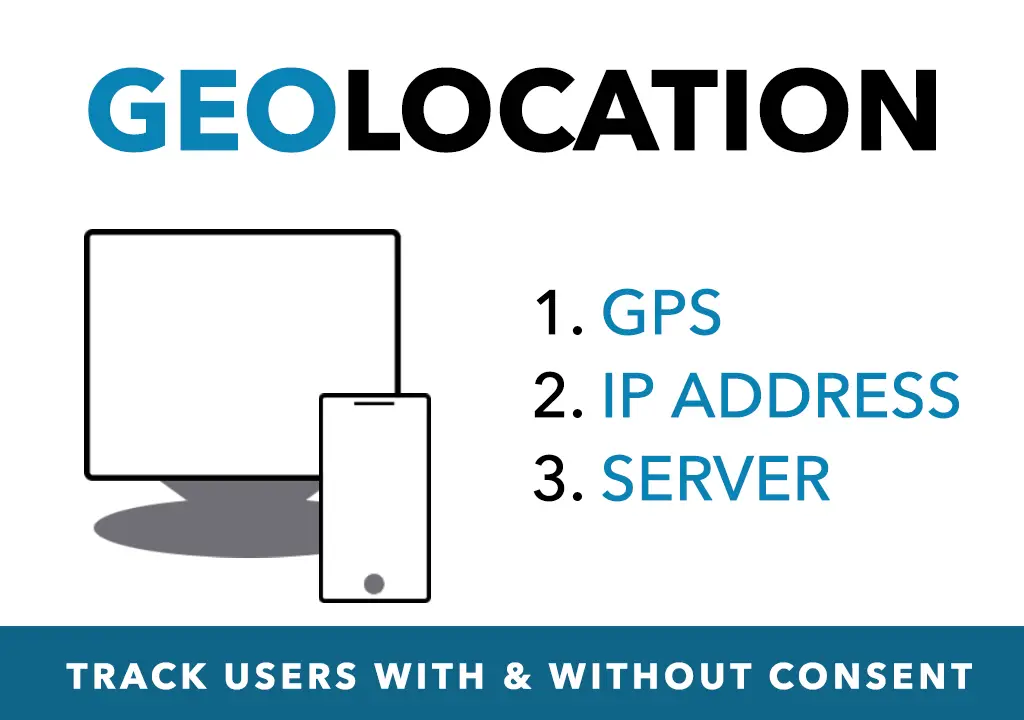
Geolocation
How to get a user's location using Javascript and other techniques available today.
